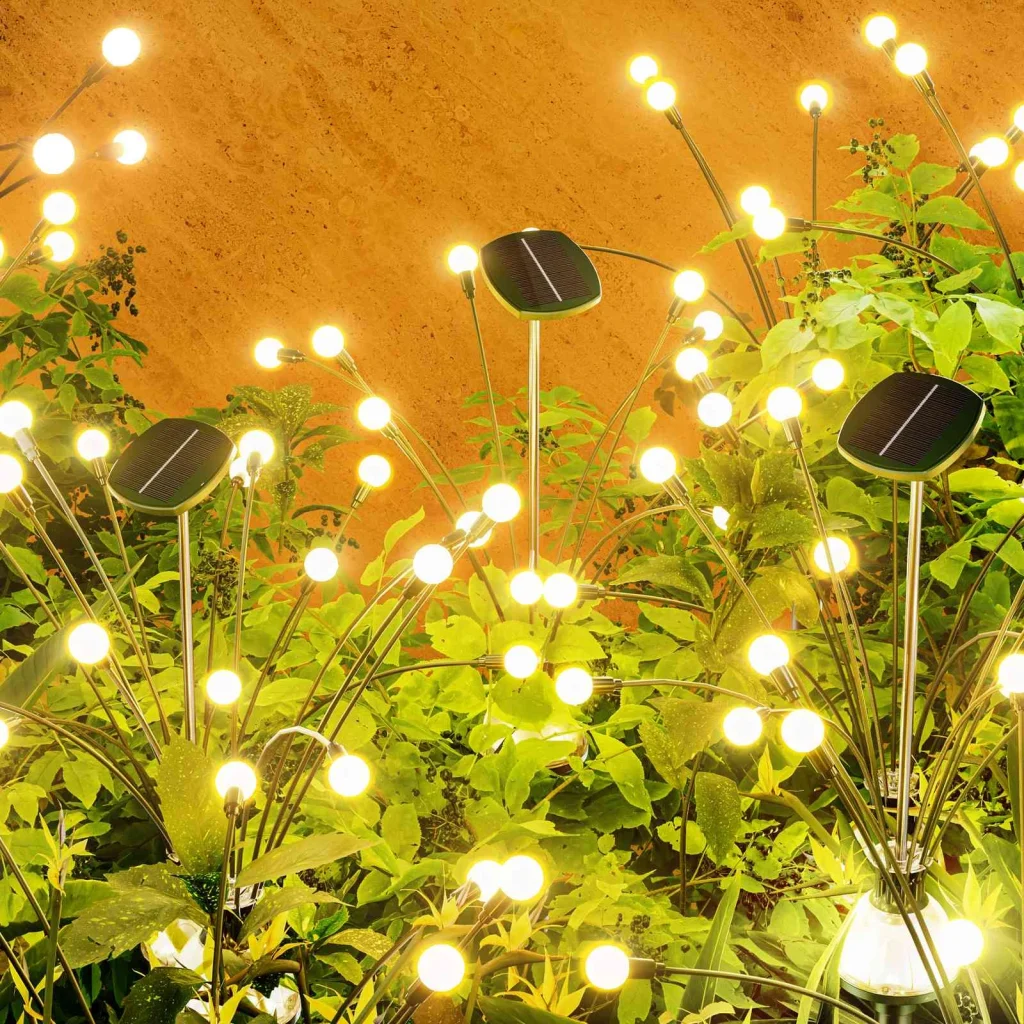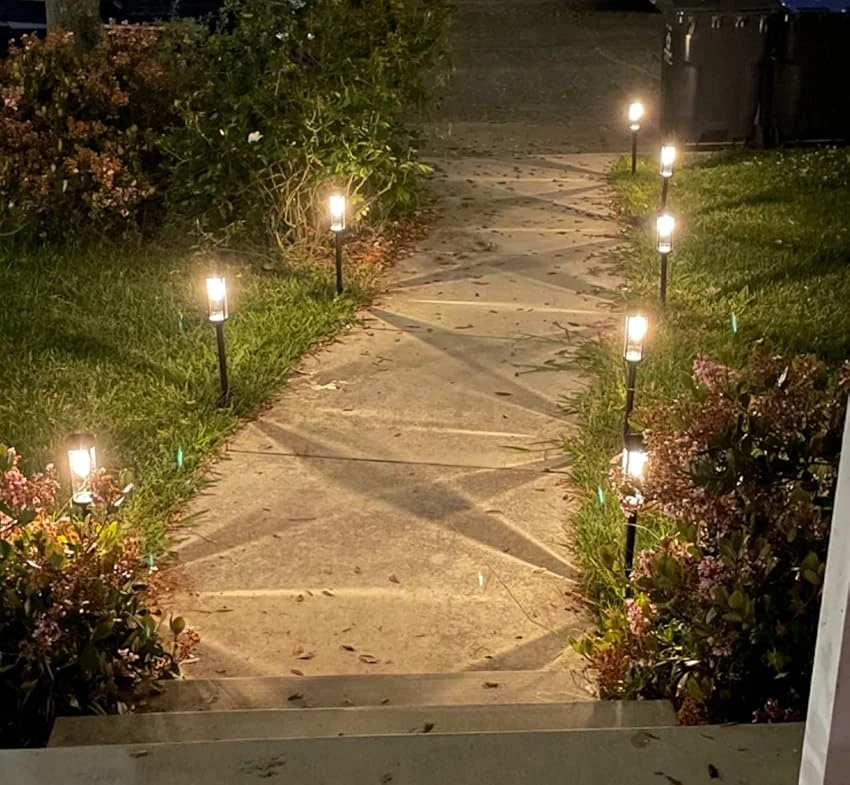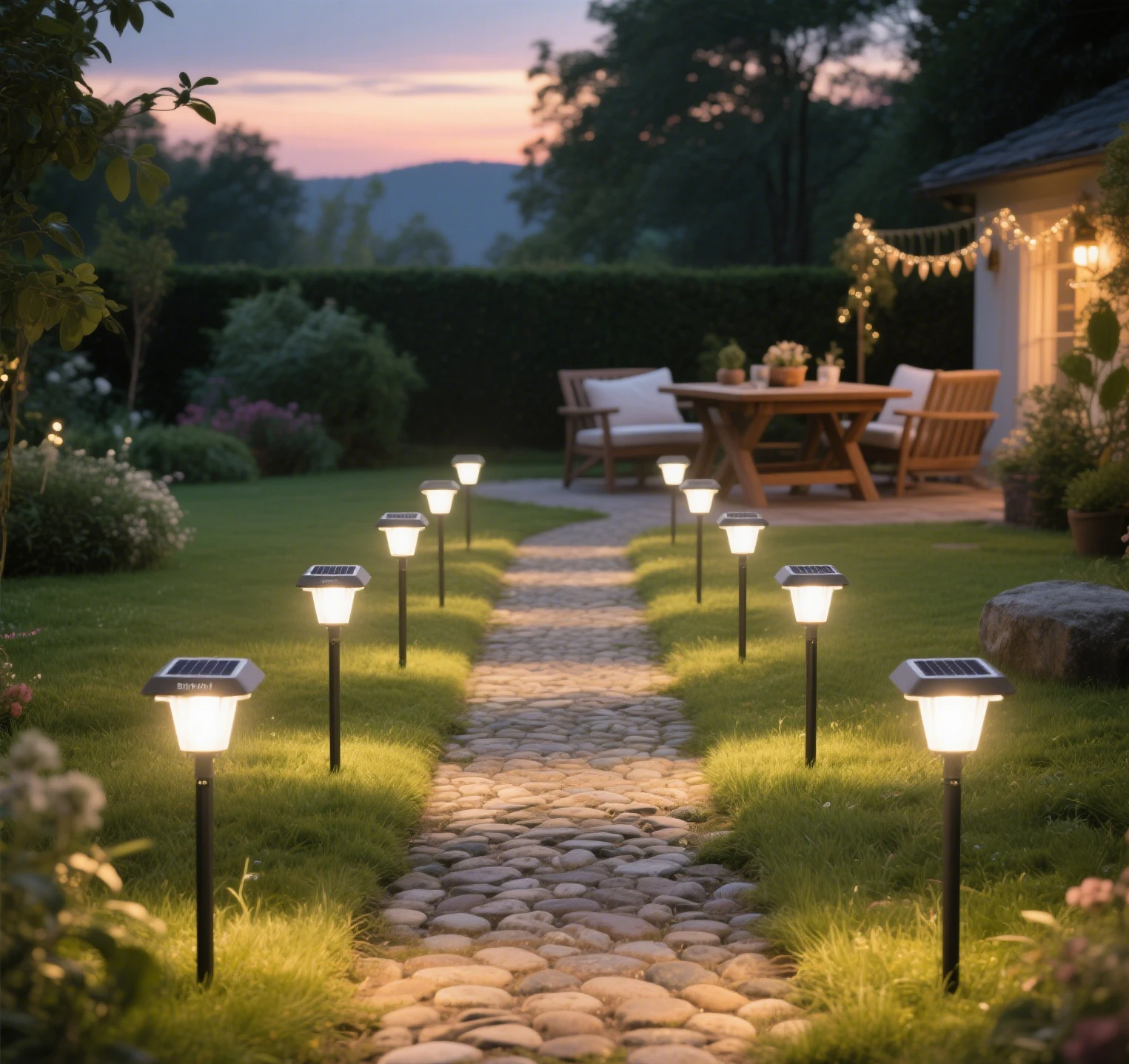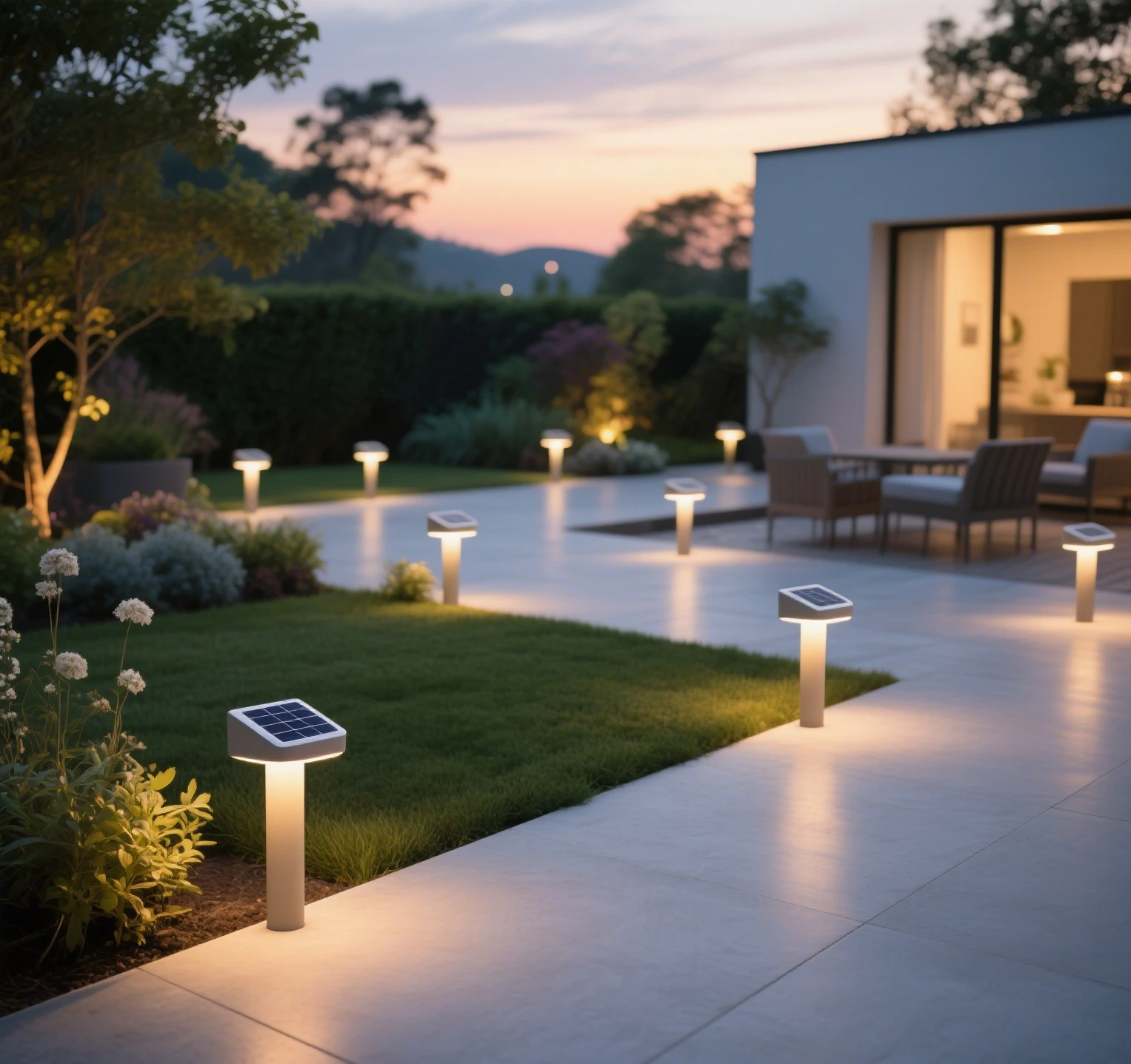Solar lights harness sunlight to illuminate spaces, offering an eco-friendly alternative to traditional lighting. Their appeal lies in simplicity, sustainability, and versatility. American households and municipalities increasingly adopt these fixtures, driven by rising energy costs and environmental concerns. The U.S. Department of Energy reports that solar lighting reduces residential energy consumption by up to 20% annually. This article explores the technical mechanics behind solar lights and categorizes their diverse forms, providing fresh insights supported by authoritative U.S. studies.

Working Principles of Solar Lights
Energy Capture via Solar Panels
Solar lights begin with photovoltaic panels. These panels, typically made of monocrystalline or polycrystalline silicon, absorb sunlight. Photons strike the panel’s surface, exciting electrons to generate direct current (DC) electricity. Efficiency varies by material. Monocrystalline panels achieve 15-22% conversion rates, per the National Renewable Energy Laboratory (NREL) 2023 findings. Panels range from small, 5-watt units for garden lights to larger, 50-watt arrays for streetlights.
Energy Storage in Batteries
Batteries store the generated electricity. Lithium-ion and nickel-metal hydride (NiMH) dominate modern designs. Lithium-ion batteries offer higher energy density, around 150 Wh/kg, and withstand 500-1000 charge cycles, according to the U.S. Energy Information Administration (EIA) 2022 data. NiMH batteries, common in smaller units, provide 80-100 Wh/kg and excel in colder climates. Charging occurs during daylight, with controllers preventing overcharge by cutting off at 4.2V for lithium-ion cells.
Illumination through LED Systems
Light-emitting diodes (LEDs) transform stored energy into light. Operating at 1.8-3.6 volts, LEDs produce 80-120 lumens per watt, far surpassing incandescent bulbs’ 10-17 lumens per watt, per the Lighting Research & Technology Journal (2023). Controllers activate LEDs at dusk, detected via photosensors registering below 10 lux. Runtime spans 6-12 hours, depending on battery capacity and LED wattage.
Control Mechanisms for Efficiency
Charge controllers regulate energy flow. Pulse-width modulation (PWM) units maintain battery health by adjusting current, achieving 85% efficiency, per NREL 2023 tests. Maximum power point tracking (MPPT) controllers, used in advanced systems, optimize panel output, boosting efficiency to 95%. Motion sensors or timers enhance functionality, activating lights only when needed, a feature critical in urban settings.
Types of Solar Lights
Solar Garden Lights
Garden lights accentuate landscapes. Units feature 1-5 watt panels and 0.5-2 watt LEDs, emitting 10-50 lumens. Designs include stake-mounted path lights and decorative lanterns. Bitpott’s Solar Pathway Lanterns, with bronze finishes, exemplify durability and style, lasting 8-10 hours per charge. The Consumer Reports 2023 survey notes 78% of U.S. homeowners prefer these for aesthetic enhancement. Batteries, typically 600-1200 mAh NiMH, recharge in 6-8 hours under full sun.
Solar String Lights
String lights drape across patios and trees. Configurations range from 10-100 LEDs, spanning 10-50 feet. Brightech’s Ambience Pro model uses 1-watt Edison bulbs, delivering 12-15 lumens each over 27 feet. Panels, often 2-5 watts, charge 2000 mAh lithium-ion batteries, supporting 5-6 hour runtimes. The American Society of Landscape Architects highlights their popularity, with 65% of surveyed designers incorporating them in 2024 projects. Waterproof ratings (IP65) ensure resilience.
Solar Flood Lights
Flood lights secure wide areas. Outputs reach 100-1000 lumens from 5-20 watt LEDs, powered by 10-30 watt panels. Batteries, often 3000-6000 mAh lithium-ion, sustain 8-12 hours of illumination. Applications include driveways and backyards. The National Safety Council (2023) credits solar flood lights with a 20% reduction in nighttime incidents in U.S. suburbs. Motion sensors, standard in models like KYY’s, conserve energy by activating only on detection.
Solar Street Lights
Street lights illuminate public spaces. Systems feature 20-100 watt panels and 10-50 watt LEDs, producing 1000-5000 lumens. Batteries, typically 12V 20-50 Ah, support all-night operation. Poles, 10-30 feet tall, integrate panels and fixtures. The U.S. Department of Transportation (2022) reports 15% of municipal lighting now uses solar, cutting maintenance costs by 30%. Bitpott’s Solar Street Lights, with MPPT controllers, exemplify high-efficiency urban solutions.
Solar Wall Lights
Wall lights enhance building exteriors. Compact designs mount on fences or facades, using 2-10 watt panels and 1-5 watt LEDs (50-200 lumens). Bitpott’s Solar Wall Lanterns, with aluminum frames, offer 8-hour runtimes from 1500 mAh batteries. Installation ease suits American homes lacking wired infrastructure. The Journal of Outdoor Recreation and Tourism (2022) notes a 25% rise in their use for porch lighting, reflecting practicality.
Solar Fairy Lights
Fairy lights add whimsy. Thin copper wires host 50-200 micro-LEDs, emitting 5-20 lumens total. Panels (1-3 watts) charge 800-1200 mAh batteries, powering 6-10 hours of glow. BHCLIGHT’s sets, popular in U.S. gardens, weave through shrubs effortlessly. The Renewable Energy World journal (2023) predicts a 40% market growth by 2027, driven by DIY decor trends.

Unique Features Across Types
Automation and Sensors
Photosensors trigger lights at dusk, below 10 lux, per EIA 2023 standards. Motion sensors, in flood and street models, detect movement within 10-30 feet, activating full brightness. Timers, common in string lights, limit operation to 4-8 hours, conserving energy.
Weather Resistance
IP65-IP67 ratings protect against rain and dust. NREL 2023 tests confirm 90% of solar lights withstand 60 mph winds, vital for U.S. coastal and plains regions. Polycarbonate or stainless steel casings enhance longevity.
Energy Efficiency Metrics
LEDs average 100 lumens per watt, per Energy Star 2023 guidelines. Panels with anti-reflective coatings, as in Bitpott’s designs, boost output by 10% in low light. MPPT controllers elevate system efficiency, reducing panel size needs.
Practical Applications in the U.S.
Residential Use
Garden and wall lights dominate suburbs. A California homeowner might install Bitpott Wall Lanterns on a fence, cutting annual lighting costs by $50, per EIA 2022 estimates. Fairy lights adorn Midwest porches, enhancing summer gatherings.
Urban Deployment
Street and flood lights serve cities. Chicago’s 2023 pilot swapped 500 grid-powered streetlights for solar, saving $200,000 yearly, per the Department of Transportation. Flood lights secure parking lots, reducing crime, per NSC data.
Rural Adaptation
Off-grid areas favor solar. Texas ranches use flood lights for livestock safety, with panels charging in 5-7 hours under intense sun, per NREL 2023 rural energy studies.
Conclusion
Solar lights operate through a synergy of panels, batteries, LEDs, and controllers, delivering sustainable illumination. Types span garden, string, flood, street, wall, and fairy lights, each tailored to distinct needs. Bitpott’s innovations exemplify efficiency and durability, resonating with U.S. preferences. The Solar Energy Industries Association (2023) forecasts a 50% rise in adoption by 2030, driven by cost savings and eco-benefits. From suburban lawns to urban streets, solar lights redefine lighting with ingenuity and purpose.
References
- U.S. Department of Energy, 2023 Solar Lighting Report.
- National Renewable Energy Laboratory, Photovoltaic Efficiency Study (2023).
- U.S. Energy Information Administration, Battery Technology Trends (2022).
- Lighting Research & Technology Journal, LED Performance Analysis (2023).
- U.S. Department of Transportation, Municipal Lighting Stats (2022).







Leave a Reply